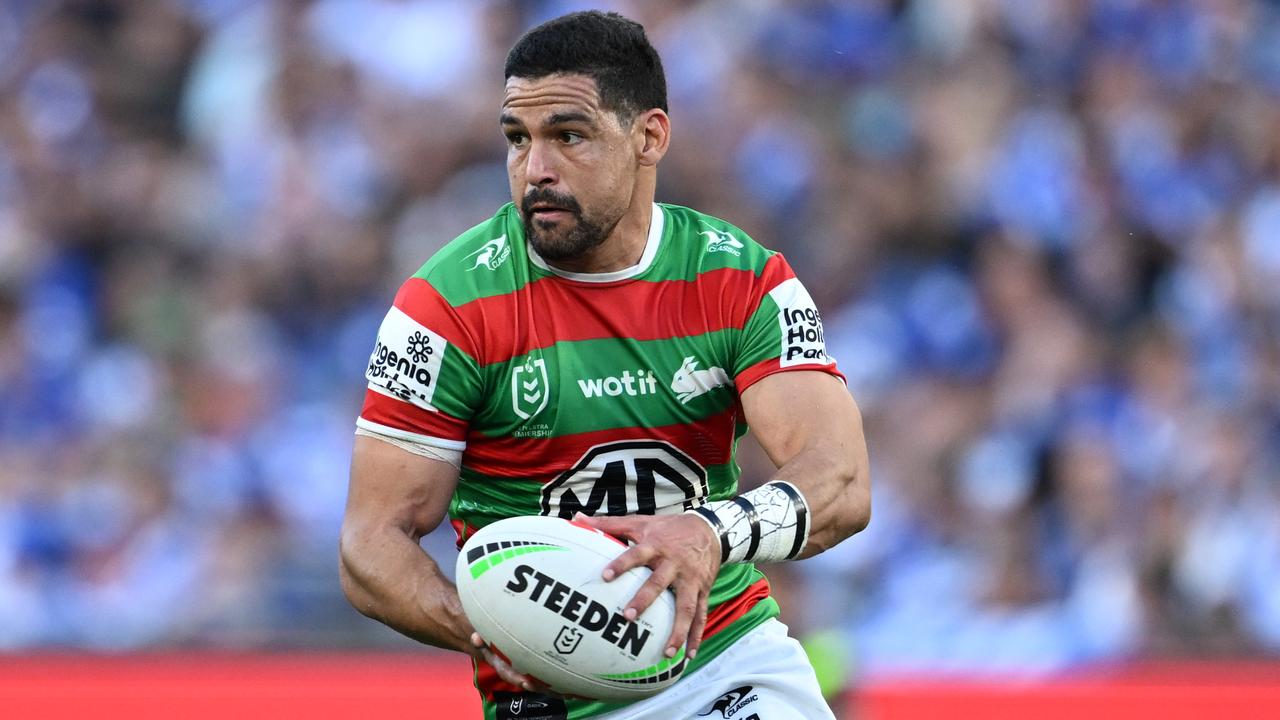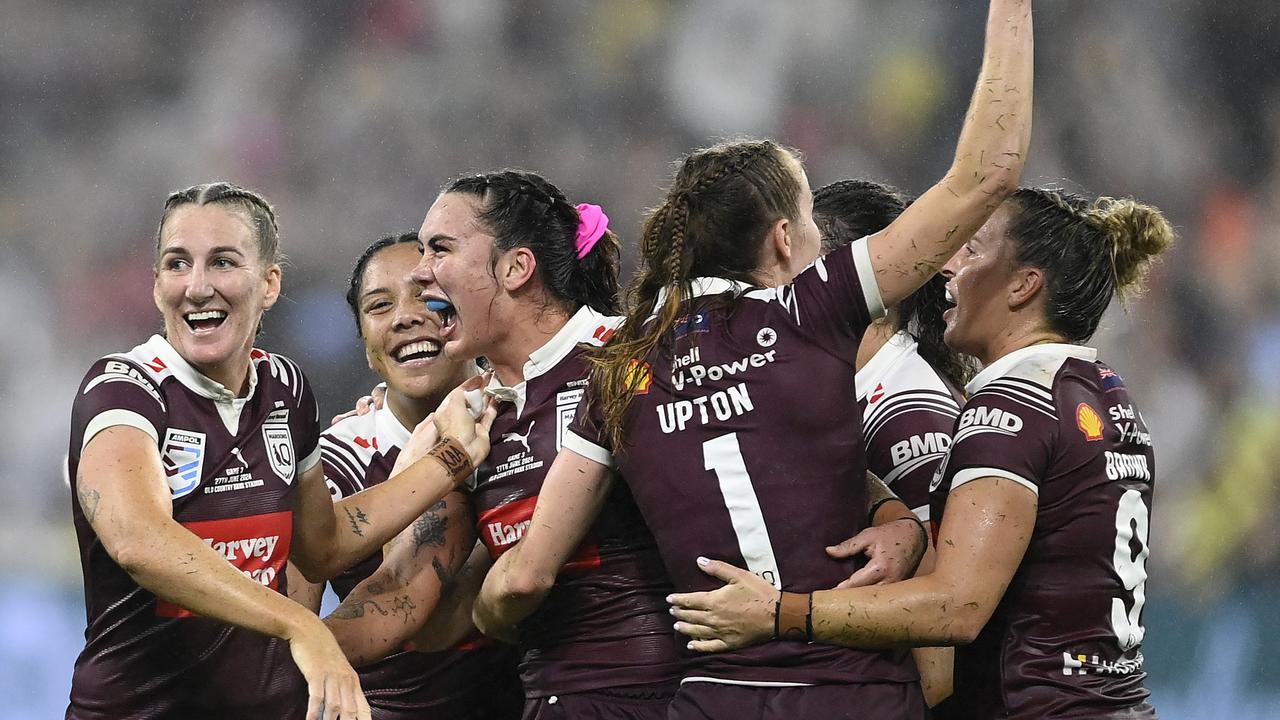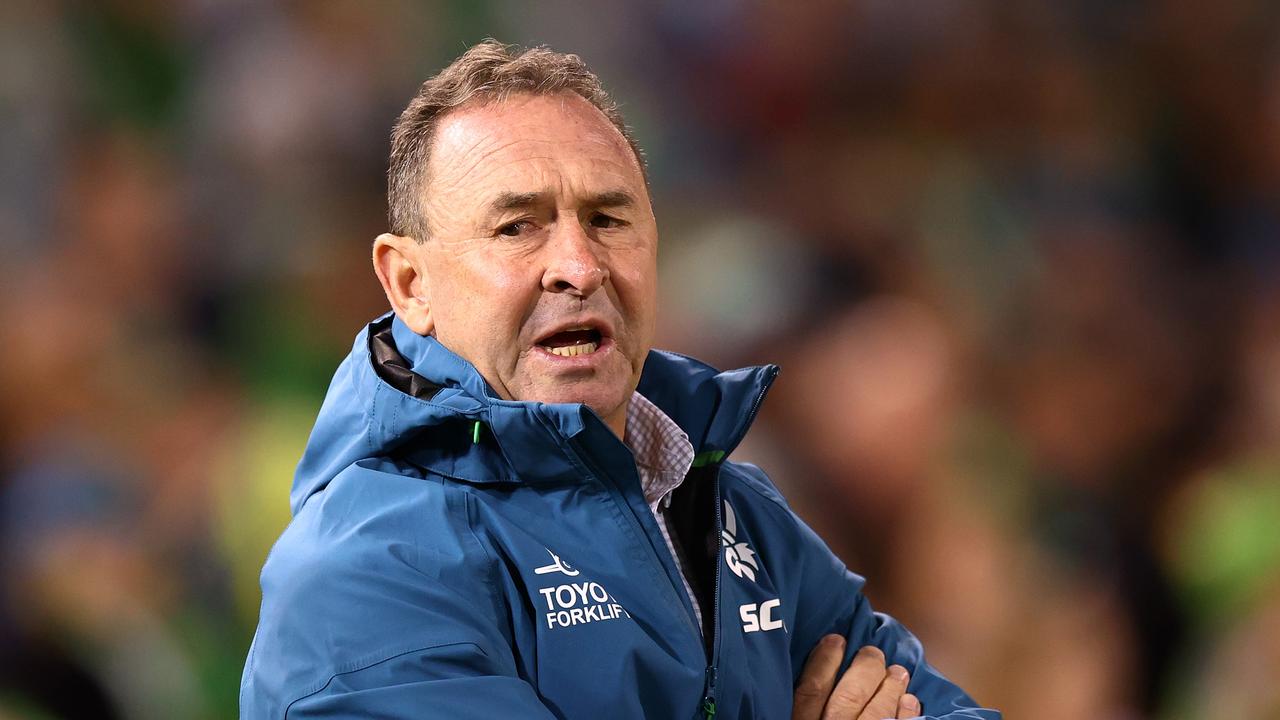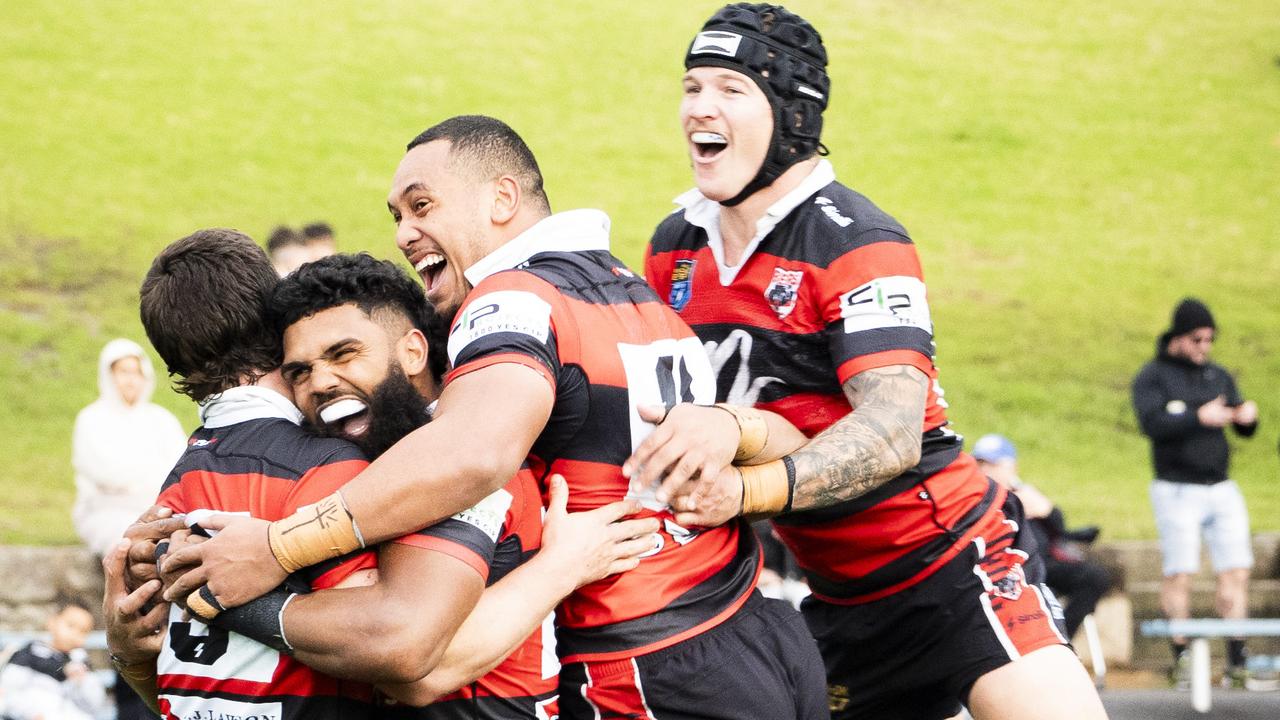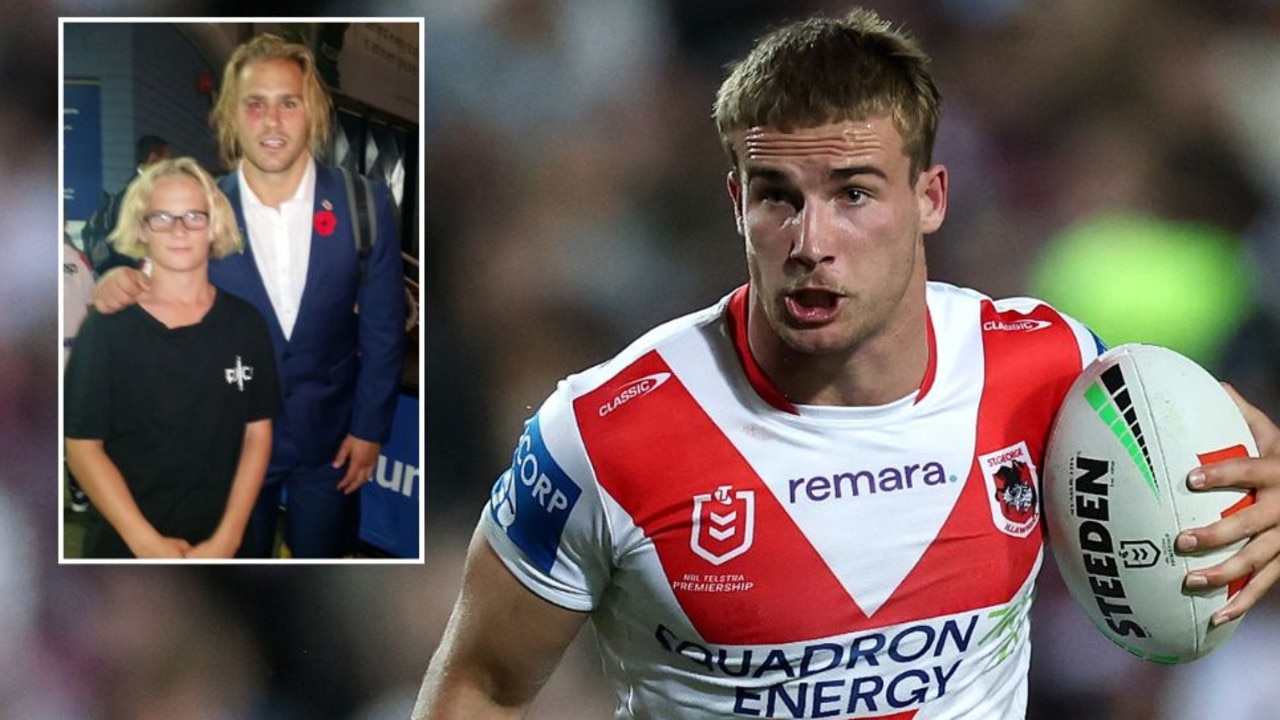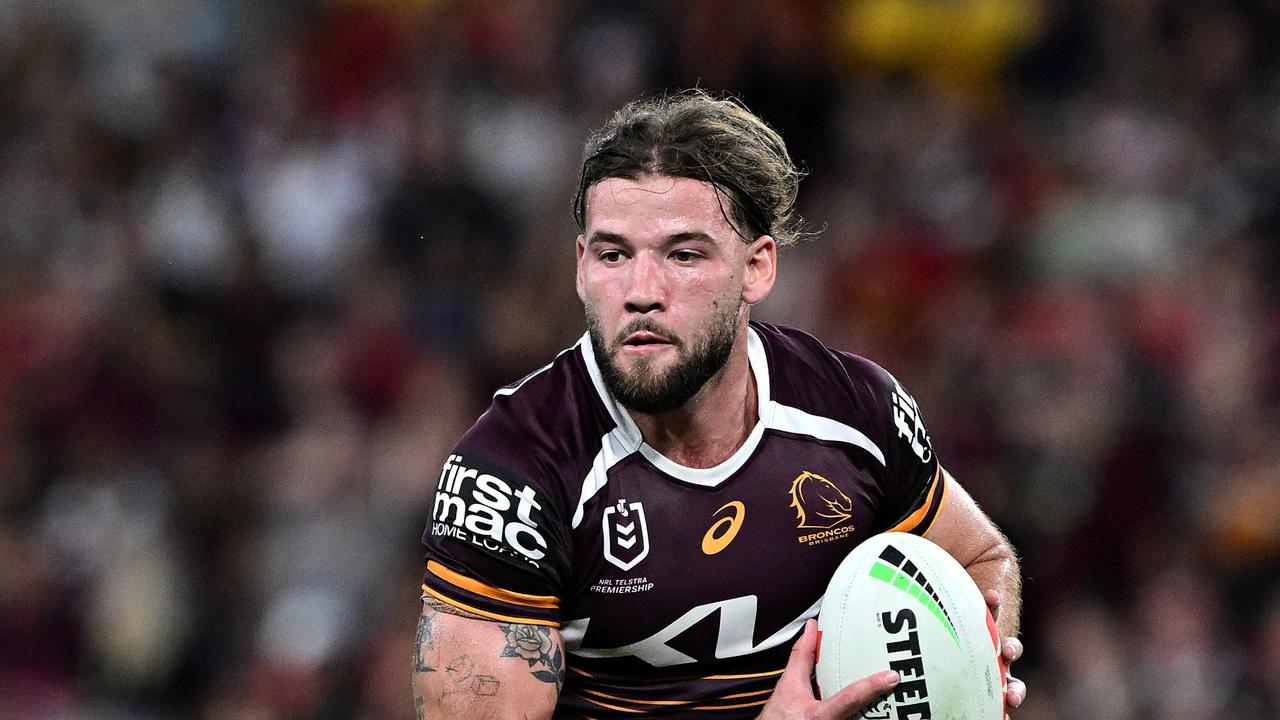Parramatta star Dylan Brown grew up in a family with very little, but he is grateful for a lot
In a dark week for the Eels, Dylan Brown‘s story is a ray of light. Pamela Whaley traces his inspirational journey to the NRL.

NRL
Don't miss out on the headlines from NRL. Followed categories will be added to My News.
This article is free to read for a limited time. For full access to deeper sports journalism, trial CODE Sports now at a low introductory price. Click here.
About 100 metres up a long and winding driveway 30 minutes outside of Whangarei sits a home that was plopped there almost two decades ago.
Dylan Brown’s parents, John and Catherine, paid $60,000 for the humble structure. They hauled it onto the property and sat it down facing the rolling Northland hills on the east coast of New Zealand’s North Island. Here, they created an idyllic family life where the kids could roam free in the lush greenery and were raised to be humble, respectful and active.
In this house, the family of five had everything they needed but not a single flourish more. For a long time, they had a roof but no ceiling. Walls but no gyprock. And certainly no idea there was anything different about that.
The Brown family don’t live there anymore, but Dylan, the youngest of the three kids, takes home with him everywhere he goes. To really know this uber cool 21-year-old Parramatta star is to understand where he’s come from.
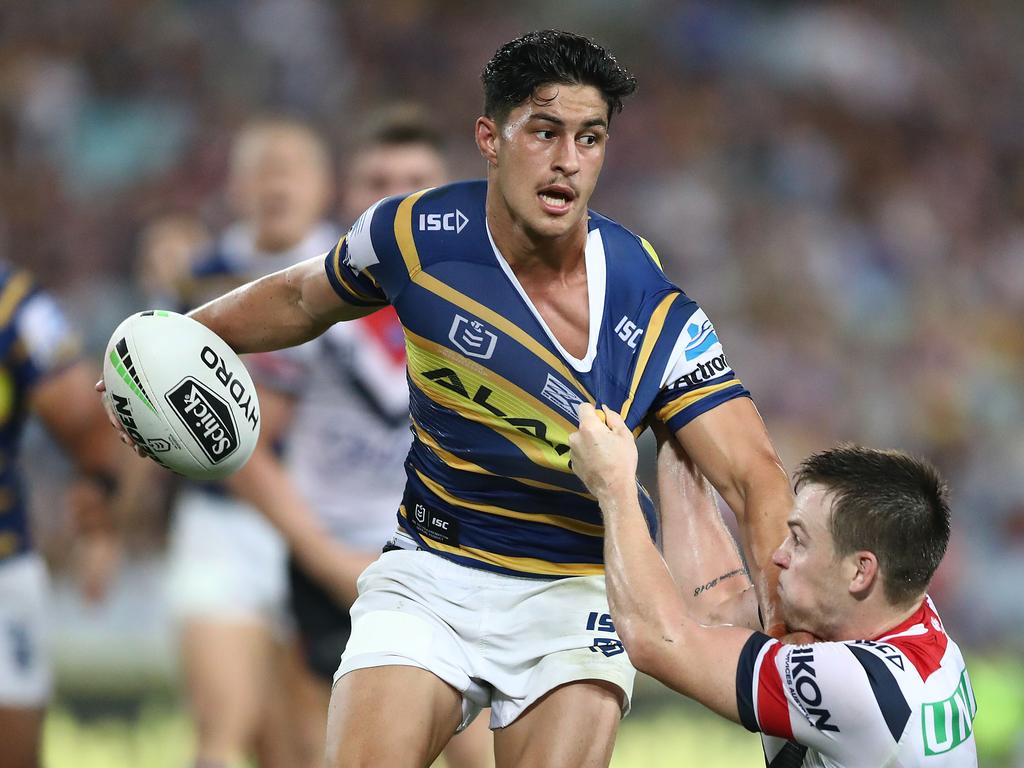
“The house was rubbish. It was a very good representation of the price that we paid for it,” he recalls.
As quickly as the weekly pay cheques would allow, John and Catherine updated the house with essentials. They moved in when Dylan was starting school and kept renovating it over the next decade, adding things here and there.
“I won’t even say that it was liveable, because it definitely wasn’t liveable, but after the first couple of years we moved in,” Dylan says.
“We had walls and a roof, but there was no gyprock, no insulation. It sounds bad, but it was honestly the best time of my life.
“There’d always be a bird in the house or it would be cold or a power outage or something. But we had the necessities.”
To Dylan and his older siblings Macayla and Josh, this quiet oasis in the hills was their kingdom. Their playground in the bush.
“I invited my mates over once, and they were like ‘oh, do you not have walls?’ So I told them the beams were just our shelves,” Dylan laughs.
“This was just normal. We didn’t have much money, just like anyone else.”
The mountain view from the front yard of his childhood home is now the background on his new iPhone. He’s a star at the Eels but not fully formed yet. He’s not as bold as they need him to be.
********
The Browns may not have had walls for a while, but Dylan remembers kids at his school who didn’t have shoes. So gratitude was instilled in him early.
“In my eyes, whatever I had was enough, more than enough,” he says.
“I remember looking at some of my friends who didn’t have shoes, I wouldn’t make fun of them, but I had shoes.
“People might hear that and think ‘that’s bad’, but it’s actually not.
“It depends on how you grow up, it was normal to me. If my mum told me the grass was purple I would think it was purple.”
Whangarei is not quite a city, but not quite a town. It’s a beautiful place with more hard luck stories than not. Poverty is common. So is crime. It can be difficult to escape that cycle if you’re a part of it. NRL players like Dylan, Adam Blair, James Fisher-Harris, Paul Turner and Wiremu Greig are all celebrated for being raised in the area but going onto bigger and better things. Like many of these places all over the world, success only comes through sacrifice. And so, the Browns did.

Each morning all five would pile into their one family car and drive the 30 minutes into town. When the “ugly white Commodore with a red stripe” broke down, they got a Subaru to facilitate the daily commute.
Dylan, Macayla and Josh were all dropped at school much earlier than it opened, while John and Catherine went off to jobs good enough to pay for the sporadic renovations, trips away and the exorbitant cost of sports fees.
At the end of the day, after Josh’s rugby practice or Catherine’s weekly netball game, the family would all be picked up again all over town to return home to the hills.
“We get up at 6, get into town at like 6.30. School doesn’t start until 8 or 8.30,” Dylan says.
“If I was dropped off at 7.20, I’d go into school and they’d open the gates anyway. I’d just sit there, eat my lunch before breakfast.”
In New Zealand schools are graded between 1-10 relative to their population of kids from low socio-economic backgrounds. It helps determine where government funding should go. A decile one school is in the top 10 per cent of schools with the highest population of students from low socio-economic communities. Dylan’s was a decile two.
“Slowly over the years schools got better at looking after kids in the morning, because it was so common,” he says.
Like the kid who once pointed out he didn’t have walls in his house, Dylan learns by comparison to his NRL teammates how different his upbringing was.

“All the mates that I live with now, they all game. They ask me, why don’t I have a PS4 or why don’t I game. I’ve thought about why I never got into it. As you can see (from the picture of his former home on the background on his phone) we lived in the bush and I was just always outside. Exploring and getting lost in the bush.
“It was so fun.
“There’s times where I complain about the smallest things. And then I think, relax. Remember where you came from.”
He left that home when he was 15. Parramatta offered him a contract after seeing him at a rugby league carnival in 2015. And then everything changed.
***********
It’s been three years since he made his NRL debut for the Eels. John, Catherine and Josh all followed him to Australia, wanting to change their lives too. Macayla and her two kids, Reuben, 4, and Grace, 5, came over for a while, but they’re back in Whangarei now.
Expectations, too, have changed.
Like many young Kiwi and Pacific Islander kids raised to be humble and respectful, he struggles to assert himself. It’s a complex problem. Good NRL halves are dominant and bold but it goes against everything he was taught to be, the mindframe he was raised with, as well as his personality. He battles to find a happy medium, but still gets accused of not caring. No one has ever said it to his face, but he reads enough comments online to know it’s true. This year especially.

“My season was average as an individual,” he says.
“I feel like I went into my shell a bit, again. It’s a confidence thing. I think it’s a Kiwi thing.
“It’s just normal, I don’t look at it as though it’s a problem, it’s just how you’re brought up. Being a dominant person is just hard for me.”
It’s an issue he’s working on with the help of coach Brad Arthur, as well as captain Clint Gutherson and halfback Mitch Moses. This is the third year they’ve been knocked out of the finals in the second week.
“I do have confidence in myself and within the team and (Eels coach Brad Arthur) allows me to feel that way,” he continues.
“Same with Mitch (Moses) and (Clint Gutherson).
“They’re helping me in a way. In the finals this year I feel like I started to come out of my shell a bit more.
“A few games before that I was playing too conservative. That’s a thing I’ve been doing a lot. It’s always been my problem. When it was the finals there was nothing to lose. Brad tells me all the time just to back myself. Someone can tell you something over and over but I’ve got to be the one to do it.”
*********
For traditionally macho rugby league fans a new generation of cool and charismatic young NRL stars can be somewhat offensive. Newcastle star Kalyn Ponga is similar. Like Dylan, his aloof swagger comes off as indifference when it’s actually humility. That the pair have interests outside of rugby league – particularly in art and fashion – is unforgivable to some. Dylan loves everything about the game, especially ‘bashing people and getting bashed, mostly’, but he also likes clothes too.
His clothing line We The North is just another way he tries to remain connected to home. His mum packs the orders in Sydney when she’s not working her day job doing clerical work for a teleradiology company, but the rest of his family help out too in various ways. Tane Mahuta, the largest Kauri tree in the Waipoua Forest in Northland, is the brand’s motif.
“I was just playing around one day drawing the tree in a cartoony way,” he explains.
“I thought, oh I’ll throw it on a hat. And then I got 50 because more boys wanted it. And then I thought I may as well make a brand out of it, and then made some hoodies.
“Still now I’m almost clueless with what I’m doing.
“It’s not so much a money thing for me, it’s just seeing people wear the clothing. Because it obviously represents Northland. The thing was, you either stay in Whangarei or you leave.
“I’m not putting Whangarei down in any way, it’s the best place ever, I love it. But you just run out of things to do.
“The clothing isn’t so much just for people in Whangarei to wear. It’s for people who have left and they feel as if they can rep where they come from in a stylish way.”
Typical of this complex character, Dylan doesn’t want people to buy the clothing because he’s designed it. He originally didn’t want anyone to even know he was behind the brand, until he realised how counter-productive it would be to sell clothing and not use the platform he has rightfully earned as an NRL star.
In the same way he doesn’t like to talk about giving back to his community back in Whangarei, and the ways he helps junior rugby clubs each season.
He’s too humble. That’s always been his problem.


